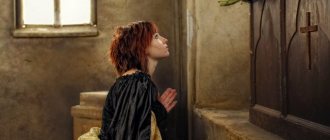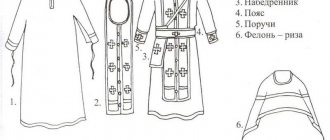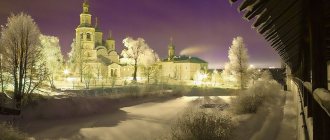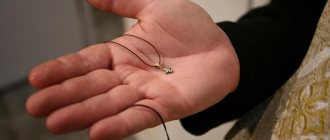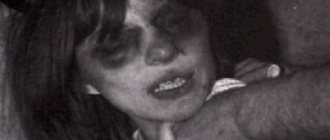Signs and superstitions have entered our lives completely unnoticed. From the very beginning of their existence, people were truly afraid that they would be overtaken by death or illness for non-compliance. Now it has only remained somewhere in the subconscious, but, nevertheless, signs are still important for modern man. This article will introduce the reader to funeral signs and their features.
Features of beliefs
At all times, there have been different beliefs in signs, rituals and traditions. Beliefs had a particularly strong influence on people in the pre-Christian period. Since ancient times, people have believed that death carries negative energy. They thought the same about anyone who died. Along with this, certain signs have emerged, that is, what can happen if you make a mistake in organizing and conducting a funeral.
How are suicides buried?
Suicides are buried without a church funeral. The most precious gift given to a person - life - a suicide, as it were, throws it in God’s face and says: “Take it, I don’t need it...” That is why in the Orthodox Church they do not perform funeral services and do not commemorate suicides.
Previously, people who committed suicide were buried behind the fence of a church cemetery. Now there are no such strict rules.
But no one forbids us to remember a suicide in home prayer.
Drunkards and drug addicts are buried according to the usual rites, unless they committed suicide.
Alcoholism and drug addiction are diseases, and we can say that people suffering from them die due to madness, and this madness is not voluntary - it is an illness.
Funeral superstitions - do's and don'ts
Signs at funerals have survived to this day. They tell us what not to do on the day of the funeral. Nowadays, traditionally, when a relative dies, relatives cover mirrors and all kinds of reflective surfaces. This is done so that the soul of the deceased does not fall into the mirror world, according to the signs. It is also believed that the soul of the deceased will not be able to find peace if it is reflected in mirror objects. Mirrors are left covered with dark cloth for forty days. Also, another basic sign is that under no circumstances should you put photographs of someone in the coffin of the dead. It is believed that in this way the deceased will take the life of the person depicted in the photograph with him. There are a huge number of funeral signs that have survived in the customs of people to this day.
What does it mean if you meet a funeral procession on the way?
Many people believe that having met a funeral procession or simply seen it from a window, the one who saw the departure of the dead on his last journey will also die. When you see something like this from the window, you need to quickly close the curtains. And if you saw a funeral process, you cannot look at the deceased and talk to those present at the burial process.
During funerals and wakes, you must not speak ill of the deceased.
It is believed that under no circumstances should one say anything bad about the deceased. This tradition is due to the fact that those who say negative things about the deceased may also die or bring disaster upon themselves. In addition, living people should not judge the deceased. Having gone to another world, he will receive a well-deserved and fair trial of his soul. The Orthodox canon, for example, says that after the death of the flesh, the human soul will ascend to heaven, where God will judge the soul by what actions he once committed while still alive.
Is it possible to photograph a dead person?
There are a huge number of signs and theories on this topic. One of them is that when photographing, the world of the dead and the world of the living seem to be connected for a split second. Another is the belief that photographs can store the energy of the dead. And later they can, as it were, inhabit their posthumous photo. Some believe that at the moment of imprinting the dead, an evil force can burst into the world of the living and bring troubles and misfortunes to it. There are also some moral standards. Many people do not allow photographs of their deceased relatives to be taken because they want to remember them alive and happy.
Why can't you look through a window at a dead person in a coffin?
This sign says that it is undesirable to look at the deceased if you saw the funeral procession from the window. People believe that this creates a risk of causing troubles and illnesses, as well as death. It is recommended not to watch the funeral from windows to avoid negative consequences.
You cannot clean the house while the body of the deceased is in it.
Signs tell us that it is undesirable and even dangerous to clean, take out garbage and do laundry while there is a coffin with the deceased in the house. It is believed that such actions can bring and attract negative energy and death into the house.
Why are the hands and feet of the deceased tied?
Signs say that evil forces can twist and bring pain to the deceased if the relatives do not tie his hands and feet themselves. From a practical point of view, the deceased is tied up to make it easier to bury him later. The body of the dead will harden and take shape, and after that it is imperative to untie his body. Here the belief says that if you do not untie the dead man, he will not be able to walk in the next world.
Features of removing the coffin
It is believed that the coffin should not be turned over before the body of a dead person is placed in it. It is also believed that blood relatives cannot carry the coffin, otherwise death will overtake the entire family of the living. Another sign is that no one should walk in front of the coffin. This way you can doom yourself to death.
After the coffin with the deceased has been taken out of the room, someone must close the doors, since it is believed that open doors after removing the deceased invite trouble into the house. The belief says that if, when the coffin is immersed in the ground, it turns over or falls, then the dead person has many unfinished plans and affairs in the world of the living.
Weather at the time of burial
Signs believe that the weather on the day of the funeral speaks about the soul of the deceased:
- Sunny weather tells that a person’s soul is pure and bright. Such weather means that a person was kind during his life and did many good deeds.
- Intensified and prolonged rain indicates that the soul of a dead person is dark and evil.
- Minor precipitation during a funeral indicates that the deceased sinned, but not terribly.
But there are other signs associated with funerals. They report that rain during a funeral is like heaven crying for a lost life.
Is it possible to kiss the deceased?
The sign says that you should not kiss the deceased on the lips. A dead person should be kissed exclusively on the forehead. Kissing a dead person on the lips, it is as if a person is receiving a kiss from death. This sign has some medical basis. A person can catch an infection by kissing a deceased person on the lips.
Why do they hammer a coffin with nails?
It is customary to nail the coffin shut for several reasons. The first is quite simple - so that during the funeral service and subsequent burial process the lid does not move or fall. The second reason contains some outdated sign. Previously, it was believed that a dead person could be resurrected and rise, so the coffin had to be closed using nails.
Previously, it was customary to nail the coffin shut to prevent reincarnation of the soul. Previously, in some cultures it was customary to bury a person with an air pipe.
Fresh flowers for funeral
Since ancient times, it has been customary to bring and place flowers on the coffin of the deceased. Nowadays it is customary to bring carnations, asters and tulips. Flowers brought to a funeral must be fresh. Wreaths should also be made from fresh flowers.
There is a tradition that no more than three shades of colors be present at a funeral. It is believed that color diversity disrupts the mourning mood.
Why you shouldn't cry at a funeral
A long-standing belief says that tears at funerals seem to drown the deceased. He seems to feel all the sorrow and pain of his living relatives. The deceased becomes uncomfortable from the large number of tears shed at his funeral.
You cannot perform a funeral service for the deceased in absentia
Traditionally, it is customary to hold a funeral service for the deceased on the third day after his death. Funeral services in absentia are held only for compelling reasons. Most often this happens if there are no remains of the deceased's body. It is dangerous to perform a funeral service for a dead person in absentia without clear reasons. The sign says that this way the soul of the dead will not be able to go to heaven.
If the dead man is not frozen
This sign says that if a dead person has not frozen, his body has not petrified, then death is coming. That is, the dead person will take one more person with him.
Funeral on the birthday of the deceased
Many people want to remember the deceased on his birthday, even if his funeral takes place on this day. After physical death, the soul acquires a new date of birth - the date of physical death. Therefore, it is better not to remember the deceased on his first birthday.
The coffin fell: what to do
The worst omen is that the coffin with the deceased was dropped at the funeral. This meant that there would be new deaths in the family. It was customary among the Slavs to bake pancakes and take them to the cemetery to ward off trouble from the family.
Flowers for the deceased
It is better to buy live flowers for a dead person. It is better to bring artificial products later, after the funeral procession.
What do they leave at the grave?
Traditionally, flowers and a photograph of the deceased, which was captured during his lifetime, are left at the grave after the funeral.
Why is it common to close your eyes?
It is customary for a deceased person to close his eyes, because there is a sign that says that the open eyes of a deceased person seem to be observing the world of the living and, as it were, looking for a new death.
Raven in the cemetery: why
A raven flying into a cemetery brings the news that someone will soon die. However, hearing a raven in a cemetery means waiting for money to arrive in the house.
You can't walk in front of the coffin
Signs say that it is not advisable to walk in front of the coffin. It is accepted that a person walking in front of a coffin with a dead person dooms himself to illness, misfortune and even death.
Why can't you go to another grave at a funeral?
It is not recommended to visit another grave immediately after the funeral of a relative. The reason for this is the sign that visiting different graves twice on the day of the funeral can have negative consequences for a person. He can attract negative energy to himself.
Beliefs for neighbors
Signs about the dead and funerals advise people who have had this sad event happen in a neighboring family to follow a number of rules.
Even if you are not going to go to the funeral, adhere to folk traditions.
- You should not sleep during the funeral. The spirit of the deceased can easily inhabit a person who is on the verge of sleep and reality. It is especially easy for the spirits of the dead to move into small children, so if a funeral is taking place in a neighboring house or apartment, it is better to go for a walk with your child. He doesn’t need to watch this difficult picture.
- You should not watch the funeral procession from the window of your house. The spirit of the deceased person will not like this, and it may send disasters and illnesses upon you. If you know in advance that there will be a funeral in the house, draw the curtains on the windows and try to pay attention to the children during this time. Even if during life the deceased person had a good disposition, after death he, not wanting to leave this world, can begin to take revenge. A child is the easiest target.
- If you accidentally look out the window and see a funeral procession, you need to immediately take a number of measures that can protect you from harm. Cross yourself and read the Lord's Prayer three times. Remember with a kind word your deceased neighbor and wish him to rest in peace. You cannot watch the funeral through a peephole or from behind a fence.
By observing these folk signs about funerals, you will be able to organize a farewell to your loved one in accordance with folk traditions, and protect yourself and your family members from harm. Death and funerals are closely associated with mysticism, so it is important not to deviate from existing customs, otherwise illnesses and misfortunes may befall you.
What not to do after the funeral of a close relative
A funeral is a special ritual that is of great importance for the relatives of the deceased. After the funeral procession, you should not perform certain actions.
Is it possible to visit after the funeral?
After burying a dead person, you cannot visit anyone for one day.
Is it possible to watch TV
Watching TV and listening to music after the funeral is not prohibited. But it is better to maintain a calm, quiet atmosphere as a sign of respect and honor for the life and death of the deceased.
Is it possible to make repairs
Repairs can only be carried out forty days after the funeral of the deceased person. The sign says that for forty days after its bodily death, the soul remains to observe loved ones and it wants to see the same environment as during life.
Is it possible to wash, shave and get a haircut?
These actions should not be performed during the period when the deceased is in the house and immediately after his funeral. It is believed that performing bath procedures is disrespect for the death of a person. Therefore, it is better not to shave or wash for several days after the funeral.
What to do with a scarf after a funeral
The scarves you wore at the funeral must be burned. Although in some cultures it is customary to leave scarves after a funeral and pray with them for the deceased, as if leaving a memory of him in the form of a scarf.
You can't wear the clothes of a dead person
The clothes of a living person absorb his energy, but when a person dies, his energy also becomes dead. Wearing the clothes of a deceased relative can transfer their dead energy to you. It is also believed that the deceased’s belongings also contain the cause of his death. The risk increases that by wearing a dead man's clothes you are dooming yourself to disaster, and the cause of your relative's death seems to be transferred to you. Another sign says that you should not burn or throw away the things of the deceased within a period of forty days.
What to do with the belongings of the deceased after the funeral
It is not recommended to throw away the deceased's belongings, especially if they hold a special memory of that person. It's better to give things to people in need. Also, things of a dead person can be recycled. Traditions advise not to touch the deceased’s belongings at all for forty days, and after that they can be burned.
Flowers for the deceased
Bringing flowers to a cemetery is one of the oldest existing traditions. There are certain beliefs that should be followed when choosing flowers for a funeral:
- They buy carnations, chrysanthemums, asters, roses, and orchids. It is not forbidden to bring to the cemetery a bouquet consisting of flowers that the deceased person loved.
- The bouquet must have an even number of flowers, but there should not be more than 8 pieces. The bouquet you bring must be left at the cemetery.
- If you are going to a young woman's funeral, choose white flowers. To honor the man's memory, buy dark flowers (burgundy or red). For a child, you should choose a bouquet of pastel colors.
- Always choose live plants.
Why do omens come true at funerals?
Funeral signs were passed down by people from generation to generation. There were reasons for the appearance of signs. For some it may be a belief in the supernatural, and for others it may be respect for a deceased relative. Such signs often come true because a person believes in them and tries to observe them.
Signs have an important place in a person’s life, and especially when he is faced with funerals and death. Traditional beliefs help maintain the mourning mood and maintain respect for the deceased. Nowadays, omens are peculiar, familiar rituals that are performed when someone close to you has died.
Life stories
Katerina writes: “My husband’s parents organized the funeral of a family friend. The morgue workers mixed up the names and listed the father-in-law as the deceased. On the way to the cemetery we encountered several accidents. And during the burial, bees swooped in and attacked him. When they lowered the coffin into the grave, the father-in-law clung to it. Now I'm very worried. What if something happens to him..."
Fedor says: “In the place where the deceased’s bed stood, you need to leave the ax. Then the people in this family will not die for a long time. You also need to place an ax on the bed of the deceased for 40 days.”
Vladimir writes: “At the funeral I had to carry a cross, which is dug into the grave. After the cemetery, I didn’t wipe my feet or wash my hands. And the next day he fell down with an unknown illness. I even ended up in the hospital. Until now, my health has not recovered. I associate this with the funeral.”
Have any omens associated with a sad ritual come true for you? Please share in the comments.
Takeaway
Traditions at Russian funerals required that the coffin be placed in the center of the room. The funeral service is scheduled between noon and sunset. Any funeral events in the evening are prohibited among Orthodox Christians. The mirrors in the home were covered and the clocks were stopped. Often, towels were hung on the windows, on which the soul rested.
To prevent the deceased from taking any of his relatives, they must be carried out feet first. Our ancestors believed that such manipulation would make the deceased forget the way home. When moving the coffin, you must try not to hit the door or walls with it. In northern Russia, after the deceased left the house, a stone was placed under the corner of the building. Such a talisman protected all loved ones from imminent death.
Removal of the deceased is an important procedure, accompanied by the emotional state of the relatives. Society condemned those who did not cry at funerals or did not grieve enough. At the same time, mothers were forbidden to shed tears for their dead children. It was believed that after death they turned into angels, so it was impossible to be sad.
Among the Slavic peoples, traditions forbade leaving the dead alone. There was always one of our friends, neighbors or acquaintances sitting nearby. It is believed that the soul is very vulnerable in the first three days, so they provided maximum support - they said prayers from the Psalter or invited special readers.
How to say goodbye to the deceased?
During the funeral service (in a church or when a priest comes to your house or to the morgue where the body of the deceased is located), the priest will definitely place a crown on the forehead of the deceased, place an icon on his hands, and at a certain moment during the funeral service he will call on everyone to say goodbye to the body. At this moment it would be appropriate to approach, bow to the deceased, thereby asking for forgiveness from him and giving him the last respects, kiss the icon that is in the coffin, and kiss the aureole on the forehead of the deceased.
If for some reason you do not have the strength to approach the body of the deceased, you can limit yourself to bowing to him, thus expressing your respect to his memory.
Seeing off
A funeral is an event that will happen to every person. If you carry out all the actions according to the rules, it will be easier for the deceased to leave the house. Let's look at the main aspects.
At this stage it is necessary to prepare the body for the sacrament. People who were not related by blood were invited to wash the remains. The deceased is washed with warm water, reading the prayers “Lord, have mercy” or “Trisagion”. Remember that only representatives of the deceased’s gender are suitable for the procedure.
For funerals, Russians usually wear clean, new clothes. You can’t take other people’s clothes, especially relatives. In this case, the deceased will “take” the person with him. Our ancestors were dressed in the best attire. It was customary for single people to dress up as if for a wedding.
The body was laid on the table and covered with a shroud - a white blanket. Before placing the deceased in a coffin, the remains and the “wooden house” were sprinkled with blessed water. A pillow was placed under the head, and a “crown” was placed on the forehead. Remember that your eyes must be closed and your lips closed.
The arms are folded crosswise - the right one is on top of the left one. To secure the limbs, they were tied with special shackles, which were released before burial. They always wore a cross and placed an icon on their chest: for men the Savior, and for women the Mother of God. While the deceased is in the room, a lamp or candle at the head of the house is lit.

